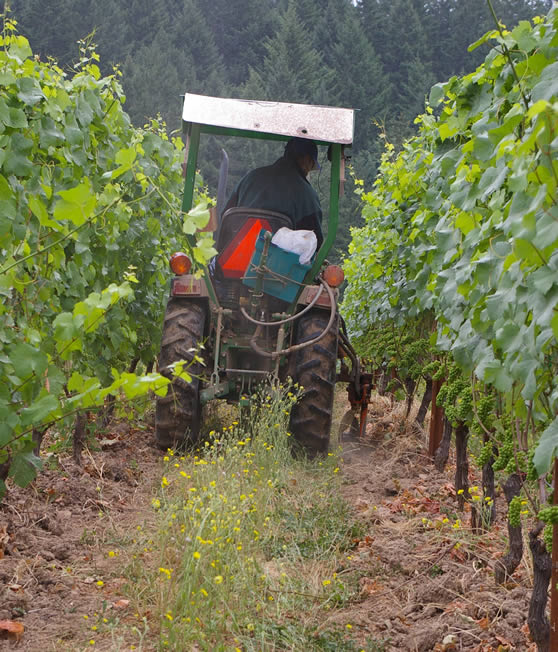
|
part 9: Bringing together biodynamics and science
So far in this series I have explored several aspects of
biodynamics. One gritty problem remains, though. It seems to be in
conflict with mainstream science. A literal belief in what
biodynamic practitioners propose would entail any adherent to
jettison large chunks of scientific understanding. Given the strong
antiscience movement that is emerging in western cultures, there are
probably some who are prepared to do this. But can’t science and
biodynamics be reconciled? Michel Chapoutier, in France’s Rhône valley, began
farming biodynamically in 1991. All 250 ha of Chapoutier’s
vineyards are now farmed this way, making him the largest biodynamic
winegrower in France by some distance. Unlike many practitioners, he
thinks that understanding the science behind biodynamics is
important. ‘Biodynamic culture has an interesting future if we
have an open attitude to fundamental science’. Chapoutier suggests
that unless the observations of the effects of biodynamics are
underpinned by a theoretical science understanding, biodynamics is
in danger of becoming a sect. To this end, he is keen to understand
the scientific explanations behind the various treatments.
‘Steiner had the genius of finding a great idea’, he explains,
‘but he is considered so highly that people think he got
everything right, even the details. People like Steiner are good
with big ideas, but not so good with the details’. Certainly, a scientific underpinning to biodynamics would
aid its wider acceptance by people currently deterred by its rather
esoteric, cultish image. This would probably be seen as undesirable
by many practitioners of biodynamics: to them, conventional science
only offers a limited perspective on the natural world. However,
scientific respectability could potentially improve the take-up of
biodynamics dramatically. However, rigorous research on biodynamics faces a number of
obstacles. First, because biodynamics sees the whole farm as a
single ‘organism’, the idea of separate, adjacent plots being
farmed by different methods, in a trial-type scenario, doesn’t
really fit. A second difficulty is persuading research funding
agencies to pay for these studies. Professor John Reganold, a
scientist at the University of Washington (Pullman) who is one of
the leading authorities on organic agriculture, told me that some of
his research proposals have been vetoed by funding agencies because
they have contained the word ‘biodynamics’. ‘Many scientists
who won’t even look at biodynamics’, he reports. Despite these problems, proper studies have been carried
out, and generally they seem to suggest that biodynamics really does
work. In 1993, Reganold and colleagues compared the performance of
biodynamic and conventional farms in New Zealand, a report published
in leading scientific journal Science.
They found that the biodynamic farms had significantly higher soil
quality, with more organic matter content and microbial activity. In
1995 Reganold published a review of the different studies that have
examined biodynamics and have met basic standards for scientific
credibility. The conclusion was that biodynamic systems had better
soil quality, lower crop yields and equal or greater net returns per
hectare than their conventional counterparts. But what could the
mechanism be? A tantalizing clue is offered by some experiments
carried out by a graduate student of Reganold’s, Lynne
Carpenter-Boggs, on the effects of biodynamic preparations on
compost development. In an experimental setting, biodynamically
treated composts showed higher temperatures, faster maturation and
more nitrate than composts that had received a placebo inoculation.
Reganold is clearly impressed: ‘Of all the farm systems that
I’ve seen, biodynamics is probably the most holistic.’ In May 2002, the results of a 21 year study comparing
organic and biodynamic farming with conventional agriculture were
published, also in respected journal Science.
A group of Swiss researchers, led by Paul Mäder of the Research
Institute of Organic Agriculture, showed that while biodynamic
farming resulted in slightly lower yields, it outperformed
conventional and organic systems in almost every other case. The
biodynamic plots showed higher biodiversity and greater numbers of
soil microbes, and more efficient resource utilization by this
microbial community. Conclusions
Other topics in this series
|

